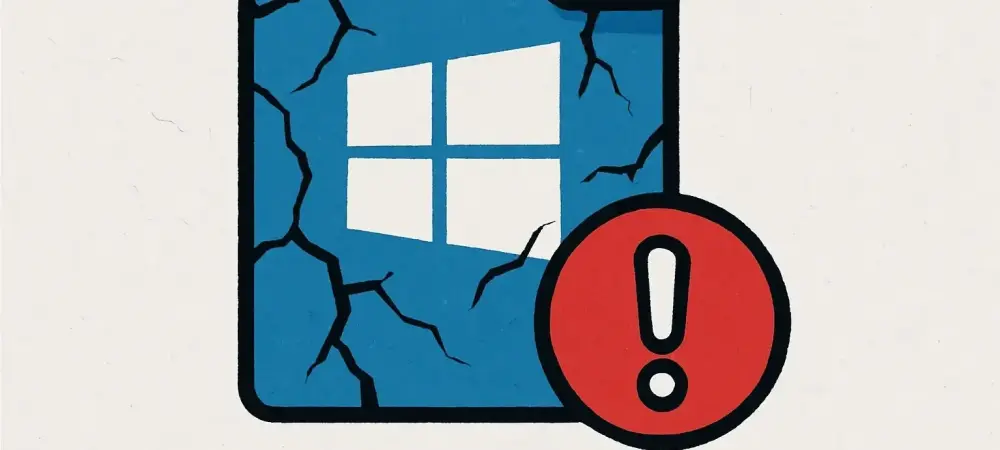In a rapidly evolving cybersecurity landscape, the vulnerabilities within Windows LNK files have emerged as some of the most elusive and dangerous threats. This review examines the exploitation of LNK vulnerabilities, a trend that continues to challenge both security experts and organizations globally. Recent disclosures revealed a formidable remote code execution vulnerability within these files that threat actors have adeptly manipulated to execute malicious code unbeknownst to users. This vulnerability has ignited a series of sophisticated cyber espionage campaigns, prompting a deeper inquiry into the operating mechanics and implications for the digital world.
Analyzing Windows LNK Vulnerabilities
Understanding the Technology: LNK files, functioning as shortcuts in the Windows operating system, are typically benign components intended to simplify navigation. However, they have become vectors for nefarious activities due to vulnerabilities that allow cybercriminals to embed and execute hidden malicious commands. This exploitation hinges on deviations from Microsoft’s file parsing specifications, consequently creating security loopholes.
Past and Present Threats: The exploitation of LNK vulnerabilities is not a novel phenomenon but rather an evolution of a persistent cyber threat. Historically utilized in various attack campaigns, these vulnerabilities have been a staple tactic for deploying malware stealthily, particularly in politically sensitive regions. Such tactics date back over a decade, reflecting both an ongoing challenge and the consistent ingenuity of threat actors in weaponizing LNK files.
Techniques Behind LNK Exploitation
Remote Code Execution: A focal point of LNK-based exploitation is the remote code execution capability. This technique allows attackers to run arbitrary code on a targeted system when a malicious LNK file is accessed. The resultant unauthorized control over a system poses a significant risk, emphasizing the severity of these vulnerabilities in compromising organizational security.
Strategies of Obfuscation and Evasion: Attackers employ various obfuscation techniques to conceal malicious payloads within LNK files, making detection exceedingly difficult for traditional security measures. These evasion strategies are crucial for the success of such attacks, as they enable the stealthy introduction of malware into otherwise secured environments.
Recent Exploitation Campaigns
Emergence of New Threat Patterns: New methodologies have surfaced, reflecting the evolving tactics of cyber adversaries. Notably, recent campaigns by groups like XDSpy highlight the continually adapted approaches to bypassing advanced security defenses. These campaigns, leveraging sophisticated LNK file manipulations, aim to exploit vulnerabilities for strategic espionage purposes.
Impactful Incidents and Responses: The cyber landscape witnessed significant incidents wherein LNK vulnerabilities were exploited as part of large-scale espionage operations. These cases underline the persistent threat posed by LNK files, showcasing the strategic agility of threat actors in circumventing established security protocols.
Consequences for Critical Sectors
Government and Institutional Exposures: Targeted attacks on governmental and institutional bodies have demonstrated the potential of LNK exploits as tools for geopolitical maneuvering. The targeted nature of these attacks, particularly prevalent in Eastern Europe, underscores the importance of vigilance and advanced protective measures within these sectors.
Financial and Commercial Vulnerabilities: The economic repercussions of LNK exploitation are significant within the financial and commercial realms. Businesses, particularly those in finance and retail, face heightened risks as cyber adversaries deploy these tactics to breach defenses, potentially leading to substantial financial losses and reputational damage.
Addressing LNK Vulnerabilities: Challenges and Strategies
Technical Barriers to Mitigation: The inherent complexity of LNK vulnerabilities poses substantial challenges in patching and mitigation efforts. Despite advances in security technology, effectively detecting and nullifying LNK-based exploits remains a formidable task for security practitioners.
Regulatory and Policy Implications: The role of regulatory frameworks in managing these cybersecurity risks is pivotal. However, existing policies often struggle to keep pace with the innovative techniques utilized by cybercriminals. There’s a pressing need for evolving regulatory strategies that can enhance the cybersecurity posture against such vulnerabilities.
Future Directions in LNK Vulnerability Management
Advancements in Security Technology: Future developments in security technology are anticipated to pivot toward more advanced detection methodologies tailored specifically to LNK exploits. Innovations in artificial intelligence and machine learning have the potential to bolster defenses against these adaptive threats.
Anticipating Threat Actor Movements: The behavior of threat actors is likely to evolve as they encounter new defenses. Understanding their shifting tactics will be integral to devising proactive cybersecurity strategies, ensuring preparedness for any emerging LNK exploitation methods.
Long-Term Impacts and Strategies: The ongoing exploitation of LNK vulnerabilities necessitates a reevaluation of long-term cybersecurity strategies. Organizations must prioritize continuous adaptation and cybersecurity literacy to mitigate the potential repercussions of these persistent threats.
Concluding Insights
In conclusion, the examination of Windows LNK file vulnerabilities reveals a complex interplay between technological shortcomings and sophisticated cyber adversaries. The implications of these vulnerabilities are vast, affecting critical sectors worldwide. However, by anticipating future trends and adapting defense mechanisms, the cybersecurity community can hope to stay one step ahead in this ongoing battle against LNK-based threats. The importance of dynamic innovation and strategic foresight in cybersecurity practices cannot be overstated as these vulnerabilities continue to challenge existing defense paradigms.

